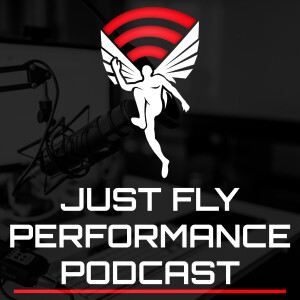
171: Jay DeMayo, Jeff Moyer, and Michael Zweifel on A Transferrable Agility and Change of Direction Training Roundtable | Sponsored by SimpliFaster
 2019-10-10
2019-10-10
Download
Right click and do "save link as"
Today’s episode is a special roundtable featuring all previous podcast guests, Jay DeMayo, Jeff Moyer and Michael Zweifel.
Jay DeMayo is a long time strength coach at the University of Richmond, working primarily with basketball along with several other sports. He also heads up the Central Virginia Sports Performance Seminar and Podcast.
Jeff Moyer is the owner at DC Sports Training and is well versed in all things Russian sports performance, and has appeared on this show multiple times, as well as having written a large number of articles on a variety of topics involving the transfer of training to sport.
Michael Zweifel has been a prior podcast guest twice and has written a large number of articles regarding the perception and reaction approach to improving in-game movement and agility.
In the world of agility training there is a big shift happening in terms of moving things into the perceptual space, and for good reason. Athletes who fail to make the right decisions in a game will be at a huge disadvantage, regardless of how good their raw ability to change direction devoid of a stimulus is. Does this mean, however, that all traditional agility and change of direction training is dead? What should we do with all of the more traditional thoughts on agility training in terms of developing the raw physical skills associated with change of direction?
This expert crew is going to dissect the answer to these questions and much more for us on the show today.
Today’s episode is brought to you by SimpliFaster, supplier of high-end athletic development tools, such as the Freelap timing system, kBox, Sprint 1080, and more.
Key Points:
Philosophy of what good change of direction on the field of play entails
Thoughts on baseline physical abilities for better change of direction
Change of direction KPI’s for athletes
Different approaches to the value and integration of non-perceptive change of direction work
How to record or quantify the results of an agility program (if this is even possible currently)
Defining pieces of agility ability and who may need work beyond perceptive and decision making training
Some of the special exercises Jeff Moyer and Jay DeMayo utilize in their work
Summary statement of each coach in regards to agility, perception and reaction
“In field based sports, change of direction means the basics of what we are trying to teach, and agility means implementing into a situation where it is responsive to some sort of stimulus” DeMayo
“I want athletes to be able to solve problems on their own without me giving them the answers” Zweifel
“In the biomechanics of change of direction, you always have to look at it in the context it is going to be asked in sport… if we are going to change technique or biomechanics, we have to do it within the context of which it is going to be asked in sport” Zweifel
“I think that one thing is we would see a lot of carryover and success (into agility) with the integration of some form of extensive method jumping” Moyer
“I don’t think there’s so much a biomechanical model; there’s KPI’s” Moyer
“If you watch sports a lot of athletes don’t (decelerate) on two legs, they do it on one leg… one of the things I look for is how many steps does it take for an athlete to stop” Moyer
“What I hope for is that it looks crisper when they are doing it (COD in sport) and they shouldn’t be thinking about it when they are doing it” DeMayo
“In actual open sports, how well you perceive the information in the environment, that will directly dictate mechanics, kinematics” Zweifel
“(Regarding defining the results of a COD/agility program) A lot of it’s qualitative” Moyer
“It is a learned error, a perceptual error, or a physical error, those are the three things I go through” Moyer
“Know your sport more, watch practices, get Hudl and look at practice, go to games,
view more
More Episodes
012345678910111213141516171819
Create your
podcast in
minutes
- Full-featured podcast site
- Unlimited storage and bandwidth
- Comprehensive podcast stats
- Distribute to Apple Podcasts, Spotify, and more
- Make money with your podcast
It is Free
- Privacy Policy
- Cookie Policy
- Terms of Use
- Consent Preferences
- Copyright © 2015-2024 Podbean.com





